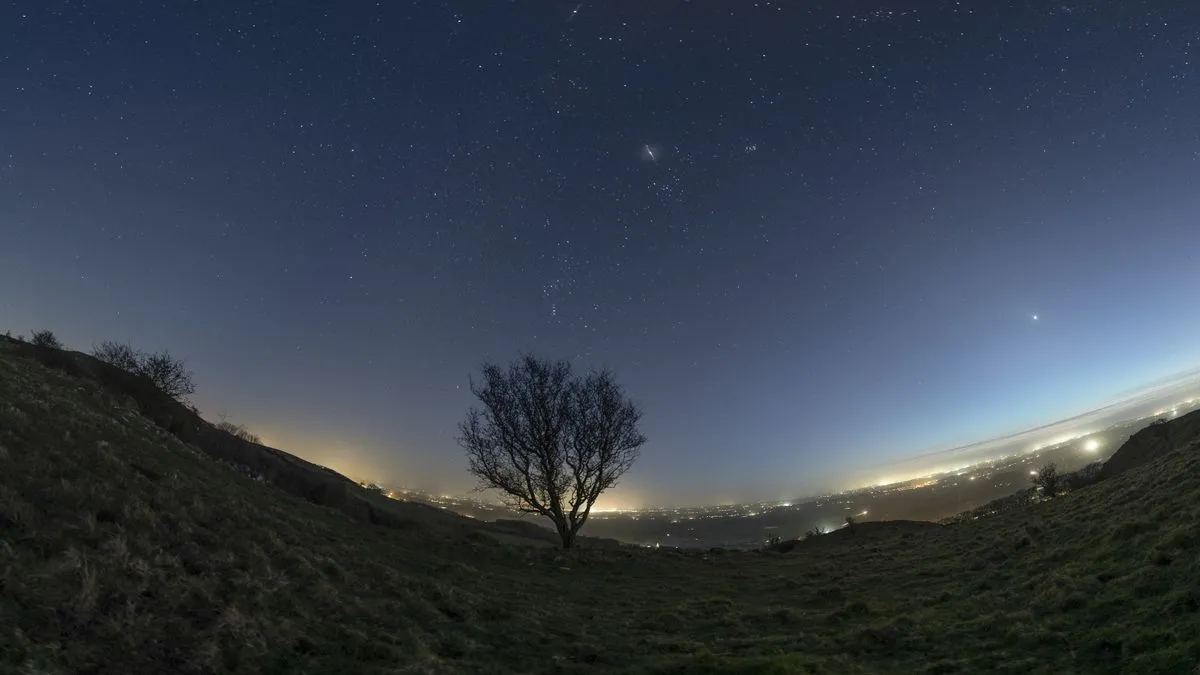
Astrophotographer Josh Dury achieved an incredible feat by capturing a stunning photograph of the seven-planet alignment on February 22 from the Mendip Hills in Somerset, U.K. Dury shared his experience with Space.com, describing it as a "fantastic, yet challenging photographic opportunity" to observe all the planets during a brief window of time.
Currently, skywatchers have the rare chance to witness a planetary parade in the evening sky, featuring seven planets aligned. For most observers, three of the brightest planets — Venus, Jupiter, and Mars — are easily visible to the naked eye. Those with a clear, unobstructed view of the horizon might also spot Saturn and Mercury, while Uranus and Neptune can be seen with binoculars or a small telescope. In Dury's case, a well-timed photograph captured this celestial spectacle.
Dury's efforts resulted in a breathtaking panoramic view of the night sky containing all seven planets. However, capturing this image was no easy feat. "It was a difficult capture with planets like Mercury, Saturn, and Neptune being in close proximity to the sun," Dury explained. To photograph these planets, Dury created a panorama composed of several panes. For the pane including Mercury, Saturn, and Neptune, he used multiple exposures; one as the base of the panorama, and another with increased exposure and ISO to capture the dimmer planets' light.
He further matched these images with plain sphere maps to confirm the planets' positions. Due to their proximity to the sun and the urgency to photograph them as soon as they were visible, the relative positions of these three planets appeared slightly misaligned from the imaging location, affected by low western cloud cover.
Dury utilized a Sony A7S II camera and a Sigma 15mm Diagonal Fisheye lens to capture the image. While planetary alignments like this aren't exceedingly rare, they are uncommon enough to be a breathtaking sight — one that won't occur again until late October 2028.
If you haven't yet caught a glimpse of this planetary lineup, there's still time this month, although Saturn, Mercury, and Neptune are becoming increasingly difficult to spot. The easiest way to see the alignment is to step outside at dusk and locate Venus, the brightest and most conspicuous planet, shining in the west-southwest sky. From there, trace a gentle arc along the ecliptic (the line or plane that all planets trace through the sky) to find the other planets.
Jupiter will be high in the south, Mars will blaze in the east near the Gemini twins, and Mercury and Saturn will require a clear, unobstructed view of the horizon. For those with binoculars, Uranus and Neptune provide an extra challenge. Uranus, with its faint greenish glow, can sometimes be seen without optical aids under dark skies, while Neptune requires a telescope to distinguish its distant blue disk.